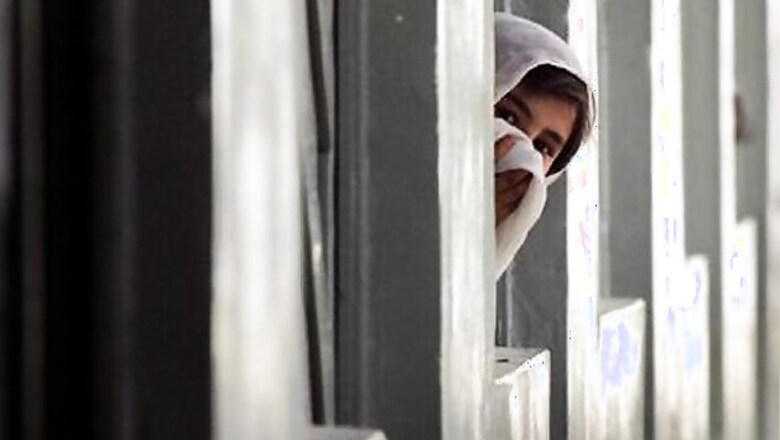
views
Kochi: Archaeology has become a tool of interactive art for Afghan artist Amanullah Mojadidi, who is working on a multi-media land installation art at the Kochi-Muziris Biennale beginning on Dec 12. Amanullah has replicated an archaeological dig - on an 8x10 sq ft plot of land - at the Aspinwall House, a colonial relic in the historic quarters of Fort Kochi by the harbour to explore the threads between migration, dislocation, subversion of history through archaeological manipulations and clash of Sufi and Sunni Islam. Forty-one-year-old Amanullah, who was born in Jacksonville in the US, works from Kabul where he campaigns for freedom through his art. He shows his works around the world.
One of his installations, "Jihadi Gangster" - a series of photographs about a day in the life of a "neo-jihadi" - shot at a bling art performance last year ran into trouble with the authorities. The series emerges from the conflict between civil society that is trying to rebuild the new Afghanistan and the hardline fundamentalists still at work. In his homeland, Amanullah has been received with critical acclaim for his radical post-modern and conceptual art that draws from the current social realities of Afghanistan.
The installation at the Kochi Biennale is essentially a series of earth patterns, made of a trench - a shallow horizontal mud basin hosting the remains of a home supposedly belonging to an "exiled Afghan businessman". A camp office next to the dig - made of tin and mud - serves as the node through which information is disseminated to reach the viewers through a human liaison, who is the official tour-guide and dig supervisor. The guide anchors the landscape and is the interactive element of the project. Few odd specimens of ancient Chinese pottery shards on display gives temporal specificity to the venue - which dates back to the early Jewish migration to Kerala a millennium ago.
The home and its occupant are the leading characters of a fictional narrative - a story-telling device that Amanullah has used to lend fleshy substance to his abstract concept. "I am a student of cultural anthropology and archaeology and not fine arts, but I use my fields of study as art. Basically, I am trying to interpret and challenge history through an archaeological excavation in installation in Kochi," Amanullah told IANS in an interview. The artist said he was trying to connect the personal migration history of his family to that of Indian migration history "with a mosaic of facts and narrative imagination".
Amanullah said his family - "the heads of the Naqshbandi Sufi order in Afghanistan and traditionally advisors to the king - migrated to Sirhind near Punjab (present-day Pakistan) in the 14th century and went back to Kabul during the reign of Timur Shah in the 17th century". This story of migration is the core of Amanullah's artistic narrative. "An Afghan merchant, a Sufi at heart, was banished from his home for rebelling against Sunni orthodoxy in the last century. He had heard about the Cochin king. The merchant travelled for a couple of years trading till he reached Fort Kochi and decided to spend his life there. But the British colonizers throw him out," Amanullah recounted the narrative of his land art.
The merchant, a Naqshbandi Sufi, is a leaf out of the artist's own life. Amanullah believes in moderate Islam. "The narrative is a comment on the conflict between the two sects of Islam (Sunni and Sufi) and a bit on my life. I have different ideas about religions. I don't have orthodox views. I want to know how people interpret history in a way that supports their own paradigms and what they do with those interpretations," Amanullah said.
Amanullah, who is working round-the-clock on his installation in the derelict Aspinwall House dug up in mounds, believes that "archeology is a political endeavour used globally in controlling history". "I want to deconstruct certain historical myths - unexplored here. One of them is the stereotype about Afghans and Afghanistan. There are Afghans like me as well," the wiry bespectacled artist summed up.




















Comments
0 comment